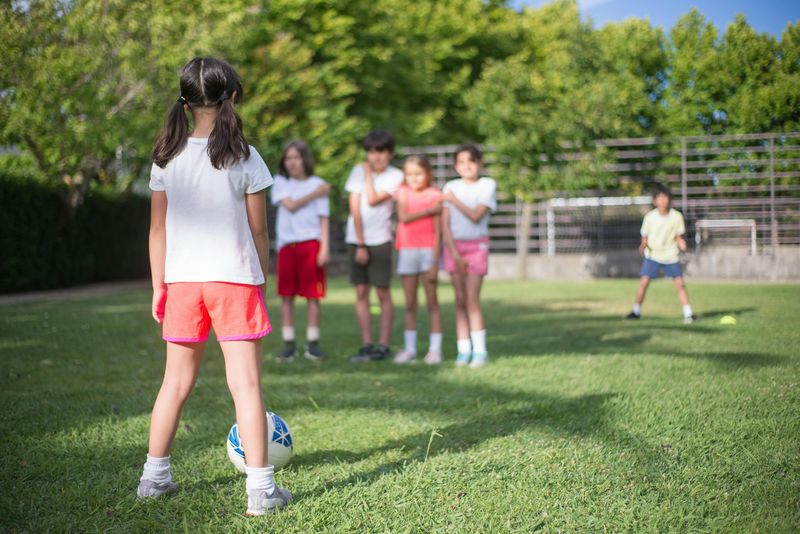
At many schools, soccer fields tell a complex tale. On one side are boys’ teams adorned with matching uniforms, structured drills and loud spectators, while girls’ programs may share spaces or train at odd hours; all these differences impact not just how students play but their learning, connections and future plans too. Academic support platforms such as writepaper.com offer solutions to manage coursework while remaining committed to teams. Providing this extra support may make all the difference between staying ahead and falling behind!
Early Inequalities on the Field
Gender differences in school soccer don’t just start overnight. They begin early, often before students reach high school. Boys’ programs tend to fit seamlessly into an athletic framework from day one, providing clear pathways leading to competitive leagues, college exposure and long-term development; by contrast, when girls’ teams emerge, they may depend on volunteer coaches or inconsistent funding sources for success; boys often can quickly enter advanced competitions while female teams struggle to catch up later. This early advantage affects confidence levels as well as skill sets more quickly, leaving girls playing catch-up later than their male counterparts.
What Boys’ Programs Often Receive Early On
- Access to experienced, certified coaches
- Regular and structured practice schedules
- Connections to local and regional competitive leagues
- Administrative support for logistics and tournaments
In contrast, many girls’ teams start later and receive limited support, which impacts both participation and performance over time.
Uneven Funding and Its Academic Ripple Effect
Money plays a decisive role in how these programs evolve. Athletic budgets tend to favor boys’ soccer, justified by higher participation numbers or community interest. Yet these numbers don’t tell the whole story. When girls’ teams lack proper uniforms, travel funds, or access to athletic trainers, participation naturally dwindles. Fewer tournaments mean less visibility. Less visibility means fewer scholarships. Over time, this cycle discourages talented girls from even joining.
Impact doesn’t stop on the field: students in well-organized athletic programs tend to form habits that carry over into their academic lives. Regular training schedules teach discipline, time management and focus. These skills have proven helpful when raising attendance rates and keeping assignments on schedule. When girls don’t have access to structured soccer programs, they miss out on this indirect academic boost. Studies consistently find female athletes tend to outperform nonathletes at school, so this loss in opportunities has an immediate and tangible cost attached.
Culture and Visibility: Who Gets the Spotlight
School culture compounds these divisions. Boys’ games tend to be publicized with newsletters, announced over loudspeakers, and scheduled during prime time slots so families can attend them; crowds gather, local newspapers take photographs of players who appear, and their names become widely circulated throughout their communities. Meanwhile, girls’ teams might play to nearly empty bleachers on weekday afternoons. This effect not only impacts morale but also influences teachers, peers, and administrators’ understanding of the value of various programs.
Perceptions can have an insidious influence on classroom dynamics. Teachers tend to give more consideration or extensions for more well-known athletes from popular teams; when girls’ soccer becomes less visible, female players don’t always receive equal consideration despite equally demanding training schedules. This creates uneven academic pressure. Some girls feel forced to choose between committing fully to their sport and prioritizing grades. For boys, the system is often designed to accommodate both.
Policy on Paper vs. Reality in Schools
Policy should offer protection against these gaps. In countries like the United States, Title IX exists to ensure gender equity in school sports. But compliance on paper doesn’t always match reality. Schools may technically offer programs for both genders, but the quality, funding, and institutional support can differ dramatically. Without regular audits, transparent budget reports, and active student involvement, these discrepancies persist unnoticed.
Practical Steps Schools Can Take
- Conduct regular equity audits of funding and scheduling
- Publish transparent athletic budget breakdowns
- Actively involve students in decision-making about sports programs
- Ensure equal access to trainers, transportation, and tournament opportunities
Mentorship and Integrated Support as Catalysts for Change
Change doesn’t need to start from the top down; mentoring programs have proven their power as effective solutions. Younger students seeing older female athletes excel academically and athletically may remain engaged more easily; their mentors can offer helpful strategies, from handling heavy homework loads to leading a team successfully. Male allies such as coaches, players or supporters can amplify this impact further by advocating for equal treatment within school communities or encouraging cultural shifts within them.
Schools that combine athletic and academic support typically experience stronger outcomes for both boys’ and girls’ teams; whether through shared tutoring programs for all athletes, coordinated schedules between teachers and coaches or designated study periods built around practice times. When both boys’ and girls’ teams are treated as integral parts of school life rather than extracurricular extras, students thrive both academically and athletically.
Leveling the Playing Field Benefits Everyone
The stakes are high. Gender gaps in school soccer don’t only influence who wins the next tournament. They shape who receives academic recognition, leadership opportunities, and college scholarships. They affect who learns to manage time effectively, who builds confidence through team success, and who carries those skills into adulthood. A level playing field benefits everyone—not just the players but the schools and communities around them.
Real equity in soccer means more than offering identical programs. Assuring quality requires attention to quality, funding and culture. When girls step onto fields with equal resources and support as boys, their academic outcomes reflect this empowerment; when schools intentionally make this shift, they not only strengthen teams but also classrooms, communities and the futures of all those they serve.








